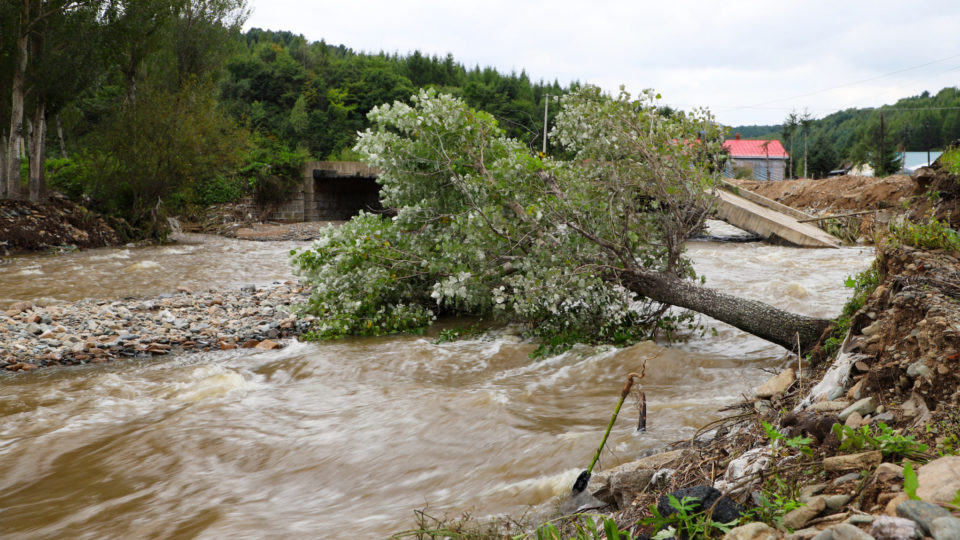In the wake of the recent catastrophic floods in Romagna, Italy, the Italian Centre for River Restoration makes the case that no more artificial works are needed, but a fundamental change that reduces flood risk by restoring the resilience of rivers using nature-based solutions.
The original article appears in Italian on the website of our member, the Italian Centre for River Restoration (CIRF).
To reduce the effects of floods in Italy, no more artificial works are needed, but a fundamental change in the management of the rivers and land.
The climate crisis is manifesting itself in all its drama in Italy. A long drought was followed by two extensive and very intense meteoric events: in less than two weeks, the areas most affected by floods in Romagna received more than half of their average annual rainfall, with over 20 rivers flooded, an unprecedented event in the last 100 years.
However, we must be clear, this event, while certainly exceptional, only makes the vulnerability of our territories even more evident, which is so even regardless of the aggravation of intense phenomena induced by climate change. Heavily channelised streams are inherently fragile. Events with higher flow rates than those for which the defence works were designed are always possible, and now increasingly probable. Furthermore, it is enough for a small part of the infrastructure to fail – such as a breach of a few metres in one embankment – to cause a catastrophic failure of the entire protection system. Assuming that the structural works “make the territory safe” is illusory and further fuels an imprudent and unscrupulous use of the land, leading to the concentration of settlements and anthropic activities also in the river valleys.
Climate change makes a paradigm shift all the more necessary. We need to recreate resilient systems capable of absorbing maximum rainfall and supporting low flow rates in a wide range of scenarios. And it is all the more urgent to understand how the “emergency” approach of more artificial flood infrastructure carried out by the Government, and also reaffirmed by Minister Pichetto Fratin, goes in the wrong direction, pushing even further towards the artificialisation of the territory and it watercourses.
We do not need more levees to be built, as the Minister claims, but more space for rivers and less soil consumption. In the currently flooded areas, there is no shortage of artificial defence works. But thinking of protecting against flood risks by resorting exclusively to building concrete infrastructure has always been a mistake. These built works have always been a fragile system and are now also undersized to contain the flood events we are witnessing. We must take a step back and invest huge resources in a national programme for the implementation of integrated measures which simultaneously guarantee the reduction of flood risk, the improvement of freshwater ecosystems and the protection of biodiversity.
Now is the time to change the current approach and imagine more diversified and effective flood protection strategies. It is necessary to set back the embankments from the river channels wherever possible, give river margins back to the public domain, restore connectivity between rivers and their floodplains – creating natural flood retention areas, indemnify the farmers who could be damaged by the floods, remove culverts from watercourses before they do it alone, rebuild higher and larger bridges when they have become insufficient, and relocate residential and productive areas and infrastructures at risk. The functionality of the river systems must be restored using nature-based solutions, as already foreseen by the guidelines of the European Commission and also by the Italian National Plan for Adaptation to Climate Change.
Giving space back to the rivers does not mean “doing nothing”, on the contrary, it means doing what is really needed. And some attempts in this sense have also been made in Romagna, but in the face of events of this intensity, an effort of orders of magnitude greater is needed, a change that no one has yet had the courage to implement.
It is inevitable that floods will occur again, climate change or not. The difference between a disaster and a manageable event depends on how the territories and communities are prepared to deal with these situations. The damages of an (unavoidable) flood will be all the greater the less that is done to reduce the vulnerability of settlements, and the probability of having victims is much higher the less people are aware of the risk to which they are exposed and have internalised the appropriate behaviours to adopt.
Furthermore, long-term changes such as climate change cannot be tackled with emergency and narrowly focused interventions. On the contrary, adequate planning on a basin scale must be strengthened to avoid creating increasingly greater problems that are only temporarily postponed in space and time. Examples include the regional regulations that promote the extraction of sediments in rivers by private individuals, and the recent decree that supports the extraction of timber in riverbeds by farmers. Sediments, timber and riparian vegetation are part of a complex system of balances that must be fully understood and managed to avoid creating more damage in the long-term than we are trying to solve in the short-term. Managing rivers is a complex task, which cannot be done without the use of different skills. It’s a long, difficult, onerous path, which does not seek immediate consensus or “turnkey” solutions. Let’s abandon slogans and shortcuts, let’s give space back to planning. And to the rivers.

